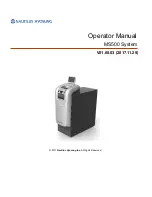
27
5.7
Dispenser Transfer (Feature Type = Machine)
Default Settings = Transfer Less
The term TRANSFER refers to the machines' capability to “transfer” an owed amount from a dispenser
that is in error or soldout. There are three different transfer operating modes available with your machine.
Transfer None
– No transfer. If any of the available dispensers fail or becomes soldout, the machine will
be placed out of service. The machine will only go out of service after the dispense in progress is
transferred to any available dispensers. This will allow the last patron to receive their full amount due.
This final vend amount will be in the form of “make best change” (least number of coins).
Transfer Equal
– Transfer will only occur if another dispenser of the same type and value as the failed
dispenser is present. Example: If two quarter (value) coin dispenser (type) are present and one fails, all
remaining and future vends will be issued from the remaining coin hopper until the failed hopper is
returned to the operating condition.
Transfer Less
- The machine will stay in service as long as one of lowest valued dispensers is available.
Transfer will occur to the same type of equal or lower valued dispensers. Example: Two quarter coin
dispensers and a nickel coin dispenser are present and a quarter dispenser fails. All remaining vends will
be issued from the other quarter coin dispenser until the failed hopper is returned to the operating
condition. If at any time the nickel coin dispenser should fail the machine will go out of service.
5.8
Forced Dispense Feature (Feature Type = Machine)
Default Settings = 0
This feature allows you to force a dispense amount (quantity) from the Primary Device. The Make Best
Change function will manage the remaining dispense amount should there be any value remaining in the
machine. This can be useful if you want to force a lower denomination coin to be dispensed even if a
larger denomination dispenser is available. Remember – the Make Best Change will try to dispense from
the larger dispenser first.
The first step (7) will set the ten’s digit (of the two-digit number), the second step (8) will be used to set
the second digit. The Forced Dispense amount can be from 0 to 99. Use the parameter table below to set
the
TENS DIGIT
as well as the
ONES DIGIT
for this feature.
Example: A nickel coin dispenser and a quarter coin dispenser are present. You would like to
force
at least
5 nickels to be dispensed for every bill deposited. In the MBCM, the vend would consist of only quarters.
To change this, you would set the nickel dispenser to be the
Primary
device and set the
Forced Dispense
to 5. The dispense would then consist of the Forced Dispense amount or 5 nickels, and the rest would be
issued in quarters. Note – the forced dispense only forces from the
Primary
device.





































